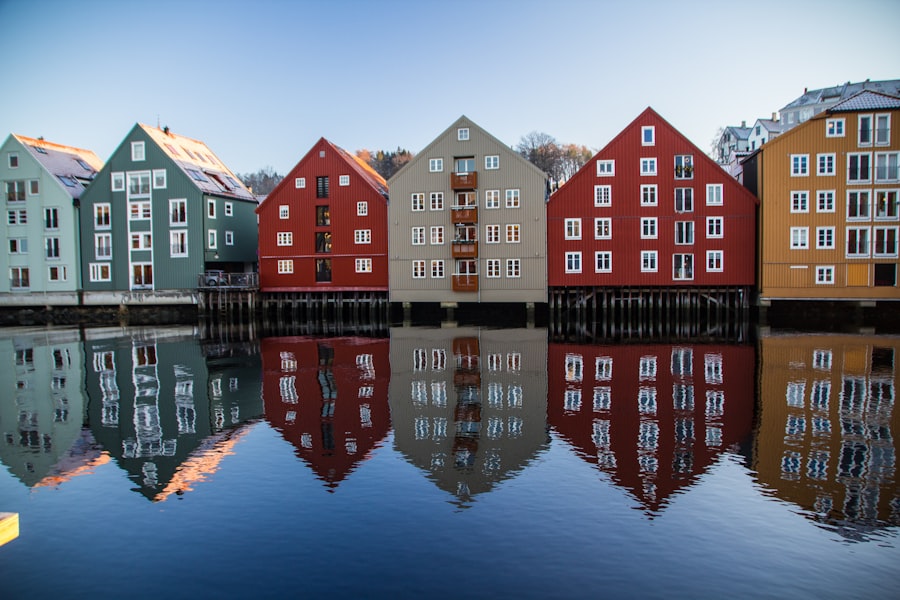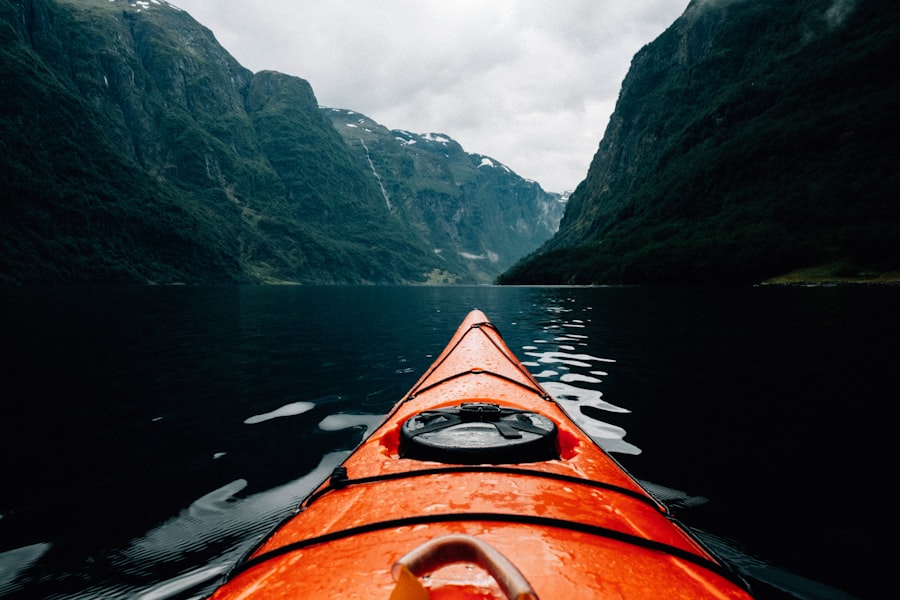Driving in Norway offers a unique experience, characterised by breathtaking landscapes and a diverse range of terrains. From the rugged fjords to the serene countryside, the journey itself can be as rewarding as the destination. However, navigating the roads of this Scandinavian nation requires an understanding of local driving customs, regulations, and the natural environment.
For those who are new to the country or planning to visit, familiarising oneself with the intricacies of driving in Norway is essential for a safe and enjoyable experience. Norwegian roads can be quite different from those in other countries, with their own set of rules and peculiarities. The combination of stunning scenery and challenging weather conditions means that drivers must remain vigilant and adaptable.
Whether you are a seasoned driver or a novice, understanding the nuances of driving in Norway will enhance your journey and ensure that you can fully appreciate the beauty that surrounds you. Book your 1-hour strategy session with Norway Relocation Group.
Summary
- Driving in Norway requires understanding of Norwegian road signs and signals, which may differ from those in other countries.
- Navigating roundabouts and intersections in Norway requires knowledge of right of way rules and signalling etiquette.
- Speed limits and overtaking on Norwegian roads are strictly enforced, and it is important to adhere to these regulations.
- Parking etiquette in urban and rural areas in Norway varies, and it is important to be aware of local regulations and customs.
- Dealing with pedestrians and cyclists on Norwegian roads requires patience and caution, as they have right of way in many situations.
Understanding Norwegian Road Signs and Signals
One of the first steps to driving in Norway is to become acquainted with the road signs and signals that govern traffic. Norwegian road signs are generally intuitive, but they can differ significantly from those found in other countries. Most signs are standardised across Europe, but there are unique symbols and colours that may require some adjustment.
For instance, warning signs often feature a triangular shape with a red border, while information signs are typically blue or green. In addition to the physical signs, it is crucial to understand the traffic signals that control intersections and pedestrian crossings. Traffic lights in Norway follow the conventional red, yellow, and green system, but there are also specific signals for cyclists and pedestrians.
Familiarising oneself with these signals will not only help in adhering to the law but also contribute to a smoother driving experience. It is advisable to pay close attention to both road signs and signals, as they provide essential information about speed limits, road conditions, and potential hazards.
Navigating Roundabouts and Intersections

Roundabouts are a common feature of Norwegian roadways, and understanding how to navigate them is vital for any driver. In Norway, vehicles already in the roundabout have the right of way, which may differ from practices in other countries. When approaching a roundabout, it is important to yield to traffic already circulating within it.
This rule helps maintain a steady flow of traffic and reduces the likelihood of accidents. Intersections can also present challenges, particularly in urban areas where traffic can be heavy. Drivers should be aware of their surroundings and anticipate the actions of other road users.
In many cases, traffic lights will dictate the flow of vehicles, but it is essential to remain cautious and prepared for unexpected movements from pedestrians or cyclists. By mastering the art of navigating roundabouts and intersections, drivers can contribute to safer roads while enjoying their travels through Norway.
Speed Limits and Overtaking on Norwegian Roads
Speed limits in Norway are strictly enforced and vary depending on the type of road and area. In urban settings, the speed limit is typically set at 50 km/h, while rural roads may allow speeds of up to 80 km/h. On motorways, drivers can expect limits of 90 km/h or 100 km/h.
It is crucial for drivers to adhere to these limits not only for their safety but also to avoid hefty fines that can result from speeding violations. Overtaking on Norwegian roads requires careful consideration and adherence to specific rules. Drivers should only overtake when it is safe to do so, ensuring that they have a clear view of oncoming traffic.
In many cases, overtaking is only permitted on stretches of road marked with dashed lines. Additionally, it is important to signal intentions clearly when changing lanes or overtaking another vehicle. By following these guidelines, drivers can navigate Norwegian roads more safely while respecting fellow motorists.
Parking Etiquette in Urban and Rural Areas
Parking in Norway can vary significantly between urban and rural areas, each presenting its own set of challenges and regulations. In cities like Oslo, parking spaces can be limited and often require payment through parking meters or mobile apps. It is essential for drivers to be aware of parking restrictions, as fines for illegal parking can be substantial.
Many urban areas also have designated zones for residents, which may not be available for visitors. In contrast, rural areas tend to offer more flexibility when it comes to parking. However, even in these regions, it is important to park responsibly and avoid obstructing roads or pathways.
When visiting popular tourist destinations or natural attractions, drivers should look for designated parking areas to ensure they do not damage the environment or disrupt local traffic. By adhering to parking etiquette in both urban and rural settings, drivers can contribute to a more organised and pleasant driving experience.
Dealing with Pedestrians and Cyclists

Norwegian roads are frequented by pedestrians and cyclists, making it essential for drivers to remain vigilant at all times. In urban areas, pedestrian crossings are common, and drivers must yield to pedestrians waiting to cross or already on the crossing. This practice not only ensures the safety of vulnerable road users but also reflects the strong emphasis on pedestrian rights within Norwegian culture.
Cyclists are also an integral part of Norway’s transportation landscape. Many cities have dedicated bike lanes that separate cyclists from motor vehicles, promoting safer travel for all road users. When driving near cyclists, it is crucial to maintain a safe distance and be prepared for sudden movements or stops.
By respecting pedestrians and cyclists on the road, drivers can foster a culture of safety and cooperation that benefits everyone.
Winter Driving Etiquette and Safety Tips
Driving in Norway during winter months presents unique challenges due to snow and icy conditions. It is imperative for drivers to equip their vehicles with winter tyres that provide better traction on slippery surfaces. Additionally, maintaining a safe distance from other vehicles is crucial during winter driving; stopping distances can increase significantly on icy roads.
When navigating snowy roads, drivers should adjust their speed accordingly and remain alert for changing conditions. It is advisable to avoid sudden movements or sharp turns that could lead to loss of control. Furthermore, using headlights during winter months is not just a recommendation but a legal requirement in Norway.
By adhering to winter driving etiquette and safety tips, drivers can ensure their own safety as well as that of others on the road.
Using Lights and Signals on Norwegian Roads
Proper use of lights and signals is fundamental for safe driving in Norway. During daylight hours, it is mandatory for all vehicles to have their headlights on, regardless of weather conditions. This practice enhances visibility for both drivers and pedestrians alike.
In addition to headlights, using turn signals when changing lanes or turning is essential for communicating intentions clearly with other road users. Drivers should also be mindful of using fog lights appropriately; these should only be activated in conditions where visibility is severely reduced due to fog or heavy rain. Misuse of lights can lead to confusion among other drivers and may even result in accidents.
By following these guidelines regarding lights and signals, drivers can contribute to safer roads while ensuring their own visibility.
Handling Toll Roads and Tunnels in Norway
Toll roads are prevalent throughout Norway, particularly in urban areas where they help fund infrastructure projects. Most tolls are collected electronically via an automatic toll system known as “AutoPASS,” which allows vehicles equipped with a transponder to pass through toll booths without stopping. It is advisable for drivers to register for this system before embarking on their journey to avoid unexpected charges.
Tunnels are another common feature of Norwegian roads due to the country’s mountainous terrain. While many tunnels are toll-free, some do require payment upon entry or exit. Drivers should remain alert when entering tunnels; reduced visibility and changes in temperature can affect driving conditions significantly.
By understanding how tolls and tunnels operate in Norway, drivers can plan their routes more effectively while avoiding unnecessary delays.
Dealing with Wildlife on Norwegian Roads
One of the unique aspects of driving in Norway is the potential encounter with wildlife on the roads. Animals such as moose and deer are known to roam freely in rural areas, posing a significant risk for drivers who may not be prepared for such encounters. It is crucial for motorists to remain vigilant, especially during dawn and dusk when wildlife is most active.
When approaching areas known for wildlife crossings, drivers should reduce their speed and be prepared to stop if necessary. If an animal does appear on the road, it is important not to swerve abruptly; instead, maintain control of the vehicle while slowing down gradually. By being aware of wildlife hazards and taking appropriate precautions, drivers can minimise risks while enjoying Norway’s stunning natural beauty.
Tips for Driving in Norway as an Expat
For expatriates navigating Norwegian roads for the first time, there are several tips that can ease the transition into this new driving environment. Firstly, obtaining a valid driver’s licence that complies with Norwegian regulations is essential; many countries have reciprocal agreements that allow for easy conversion of foreign licences. Additionally, familiarising oneself with local driving customs will enhance overall confidence behind the wheel.
Joining local driving groups or forums can provide valuable insights into common practices and tips from experienced drivers in Norway. Lastly, taking time to explore various regions by car will not only improve driving skills but also offer opportunities to appreciate Norway’s breathtaking landscapes fully. In conclusion, driving in Norway presents both challenges and rewards that require careful consideration from all motorists.
By understanding road signs, navigating roundabouts effectively, adhering to speed limits, respecting pedestrians and cyclists, practising winter driving safety measures, using lights appropriately, handling tolls efficiently, being cautious about wildlife encounters, and following tips tailored for expatriates—drivers can ensure a safe journey through this beautiful country. For those looking to immerse themselves further into Norwegian culture while enhancing their language skills during their stay—consider enrolling in courses at the NLS Norwegian Language School in Oslo. With tailored programmes designed for various proficiency levels, NLS offers an excellent opportunity not only to learn the language but also to connect with local customs that will enrich your experience as you navigate both the roads and life in Norway.
Speak Norwegian with confidence. Enroll in a class at the NLS Norwegian Language School now.

